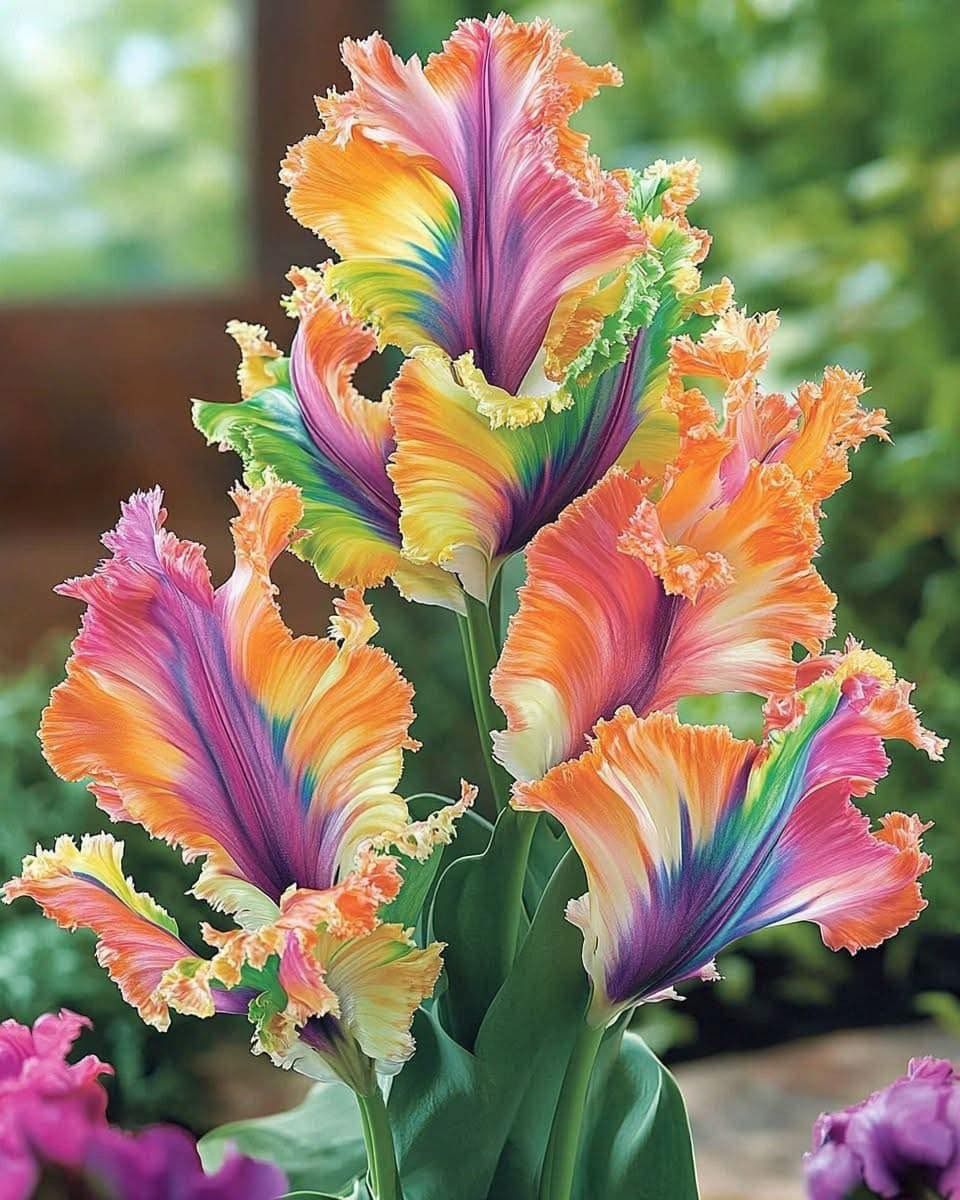Parrot Tulip (Tulipa ‘Papagena’) 🌷 – A Dazzling Spring Showstopper
Looking to make a bold statement in your spring garden? The Parrot Tulip (Tulipa ‘Papagena’) is a true floral masterpiece. Known for its large, ruffled petals and vibrant blend of colors—often streaked with red, white, pink, and yellow—this unique tulip resembles the feathers of a tropical parrot, making it a favorite among gardeners and flower enthusiasts alike.
With its dramatic form and eye-catching hues, the Papagena tulip brings energy and elegance to any outdoor space. Whether planted in borders, container gardens, or as part of a mixed bulb display, this variety never fails to impress.
Plant Profile
- Botanical Name: Tulipa ‘Papagena’
- Common Name: Parrot Tulip
- Type: Perennial bulb (treated as annual in some climates)
- Bloom Time: Mid to late spring
- Height: 16–20 inches (40–50 cm)
Care Instructions
🌞 Light
Plant your Papagena tulips in a spot that receives full sun to partial shade. Full sun encourages the strongest blooms and healthiest growth, but they can tolerate some afternoon shade in warmer regions.
💧 Water
Water moderately during the growing season. Ensure the soil stays slightly moist but never soggy, as too much water can cause the bulbs to rot.
🌱 Soil
These tulips prefer well-draining, sandy or loamy soil. If your garden has heavy clay, consider amending it with compost and sand or planting bulbs in raised beds or containers.
🌡️ Temperature
Tulipa ‘Papagena’ thrives in cool to moderate climates. In regions with mild winters, pre-chilling the bulbs for 8–10 weeks before planting can help ensure proper bloom development.
🌼 Fertilizer
Feed with a balanced bulb fertilizer at planting time and again right after blooming. Avoid high-nitrogen fertilizers, which may promote foliage growth over flowers.
Design Tips
- Plant in groups of 10–15 bulbs for a bold, colorful impact.
- Combine with solid-color tulips, daffodils, or hyacinths for striking contrasts.
- Great for containers, borders, or cutting gardens.
- Allow foliage to die back naturally after blooming to feed the bulb for next year.
Frequently Asked Questions (FAQs)
1. Are Parrot Tulips perennials? Technically yes, but in many climates, they are treated as annuals due to decreased bloom quality after the first year. Replant annually for best results.
2. When should I plant Papagena tulips? Plant in the fall, 6–8 weeks before the first frost is expected.
3. Can I grow them in containers? Absolutely! Use well-draining potting mix and ensure containers have drainage holes.
4. Do they attract pollinators? Yes—bees and butterflies are often drawn to their bright colors.
5. How deep should I plant the bulbs? Plant bulbs about 6 inches deep and 4 inches apart.
Related Garden Guides You’ll Love
- Spring Flower Planting Guide
- Best Flowers for Container Gardening
- How to Grow Tulips Step-by-Step
- Top 10 Spring Bulbs for Colorful Gardens
- Best Cut Flowers to Grow at Home
Conclusion: Add a Touch of Drama to Your Spring Garden 🌷
With its flamboyant petals and painterly blend of colors, the Parrot Tulip ‘Papagena’ brings bold beauty and movement to your spring garden. Easy to grow and stunning in bloom, it’s a must-have for gardeners who love vibrant floral displays. Whether you’re planting a spring border, designing a container garden, or just love unique tulips—Papagena is ready to impress.
